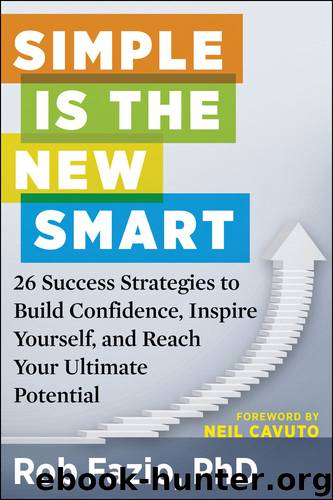Simple Is the New Smart by Rob Fazio

Author:Rob Fazio
Language: eng
Format: mobi
Publisher: Career Press
Published: 2016-02-21T14:00:00+00:00
Section 3
Leading
14
Innovation Evaporation
Innovation Creation
Innovation is just a word, but it is a word that is polarizing. It either excites or scares people. It can put pressure on people and businesses to always be the first and the fastest, and it can consume energy. However, if you think of innovation in a limited way, such as discovering something cutting edge or technologically savvy, then you are missing the point. The point of innovation is to have vision for emerging changes, and then be committed to responding to change in smart ways.
Innovation is about seeing things differently, so you have the opportunity to do things differently. When people think about innovation, they tend to think of it as more of a revolution, like the creation of the iPhone. Though the iPhone is brilliant and changed the way people communicate, operate, and live, not every innovation has to be earth-shattering.
The trap people typically fall into is saying to themselves, “It’s the way we’ve always done things.” As complex as our minds are, they are also simple. Once we write a script, our minds like to stick with it, similar to a code in software development. If “it’s the way we’ve always done things” is your typical reaction, you need to ramp up on the innovation.
One of the most disheartening consequences of the Great Recession is that businesses and people are scared. There is so much focus on fear that it not only impacts productivity, it hinders creativity. With my clients prior to 2008, risk was rewarded. Granted, that was part of the problem. There was too much risk in certain industries. However, I believe there has been an overcorrection, so much so that people are rewarded and reinforced for saying “no” more than they are for saying “yes.” It simply has made it harder for companies to innovate and progress. Even worse, it has had an impact on individuals because they are fearful of making the wrong decisions at the wrong time and getting punished.
One company I worked with was so risk averse that the employees used to call the decision-making process “the slow no.” Now, of course, calculated risk management is critical to success, but not at the expense of a work environment where people feel like they are constantly standing still. Staying comfortable is pretty comfortable—until something changes, and the odds of something changing are pretty good.
Download
This site does not store any files on its server. We only index and link to content provided by other sites. Please contact the content providers to delete copyright contents if any and email us, we'll remove relevant links or contents immediately.
Tools of Titans by Timothy Ferriss(8149)
Change Your Questions, Change Your Life by Marilee Adams(7559)
Deep Work by Cal Newport(6814)
Man-made Catastrophes and Risk Information Concealment by Dmitry Chernov & Didier Sornette(5875)
Playing to Win_ How Strategy Really Works by A.G. Lafley & Roger L. Martin(5744)
Digital Minimalism by Cal Newport;(5582)
Big Magic: Creative Living Beyond Fear by Elizabeth Gilbert(5550)
The Slight Edge by Jeff Olson(5314)
Ego Is the Enemy by Ryan Holiday(5220)
The Motivation Myth by Jeff Haden(5120)
Stone's Rules by Roger Stone(4986)
The Laws of Human Nature by Robert Greene(4920)
Tuesdays with Morrie by Mitch Albom(4588)
Eat That Frog! by Brian Tracy(4377)
Rising Strong by Brene Brown(4338)
Skin in the Game by Nassim Nicholas Taleb(4121)
The Money Culture by Michael Lewis(4024)
Bullshit Jobs by David Graeber(3989)
Skin in the Game: Hidden Asymmetries in Daily Life by Nassim Nicholas Taleb(3866)
